How to check if you have meningitis. Meningitis Diagnosis: Comprehensive Guide to Symptoms, Tests, and Treatment
How to recognize meningitis symptoms. What tests are used to diagnose meningitis. When to seek emergency medical care for suspected meningitis. How different types of meningitis are treated.
Understanding Meningitis: Types and Causes
Meningitis is a serious condition characterized by inflammation of the meninges, the protective membranes surrounding the brain and spinal cord. This inflammation can be caused by various factors, leading to different types of meningitis:
- Bacterial meningitis: The most severe and life-threatening form
- Viral (aseptic) meningitis: The most common type, usually less serious
- Fungal meningitis: An uncommon type caused by fungal infections
- Parasitic meningitis: A rare form caused by parasites
Each type of meningitis requires different approaches to treatment, with bacterial meningitis demanding immediate antibiotic intervention to prevent potentially fatal complications.
Recognizing Meningitis Symptoms: When to Seek Medical Attention
Identifying meningitis symptoms early is crucial for timely treatment and prevention of serious complications. Key symptoms to watch for include:

- Severe neck stiffness without apparent cause
- Persistent, painful headache
- Disorientation or confusion
- Nausea and vomiting
- High fever (101°F and higher), especially when combined with other symptoms
Can meningitis be mistaken for other conditions? Yes, meningitis can sometimes be confused with the flu, dehydration, or gastroenteritis. This is why it’s essential to seek medical attention if you experience these symptoms, particularly if they appear suddenly or worsen rapidly.
The Importance of Prompt Medical Evaluation
Early diagnosis and treatment of meningitis, ideally within 24 hours of symptom onset, can significantly improve outcomes and reduce the risk of long-term complications. Bacterial meningitis, in particular, can progress rapidly and become life-threatening within days if left untreated.
Physical Examination: The First Step in Meningitis Diagnosis
When a patient presents with symptoms suggestive of meningitis, healthcare providers typically begin with a thorough physical examination. This exam includes:

- Reviewing the patient’s medical history and recent travel
- Checking for unusual skin markings or rashes
- Testing for specific signs of meningeal irritation
What are the specific signs doctors look for during a physical exam for meningitis? Two classic signs that may indicate meningitis are:
- Brudzinski’s sign: Involuntary bending of the knees and hips when the neck is flexed forward
- Kernig’s sign: Pain in the back or thigh when the leg is straightened from a flexed position
It’s important to note that while these signs can be indicative of meningitis, their absence does not rule out the condition. Recent research suggests that many patients with meningitis may not display these classic signs, emphasizing the need for additional diagnostic tests.
Diagnostic Tests for Meningitis: From Blood Work to Imaging
Accurate diagnosis of meningitis often requires a combination of laboratory tests and imaging studies. These diagnostic tools help healthcare providers determine the presence of infection, identify the causative agent, and assess the extent of inflammation.
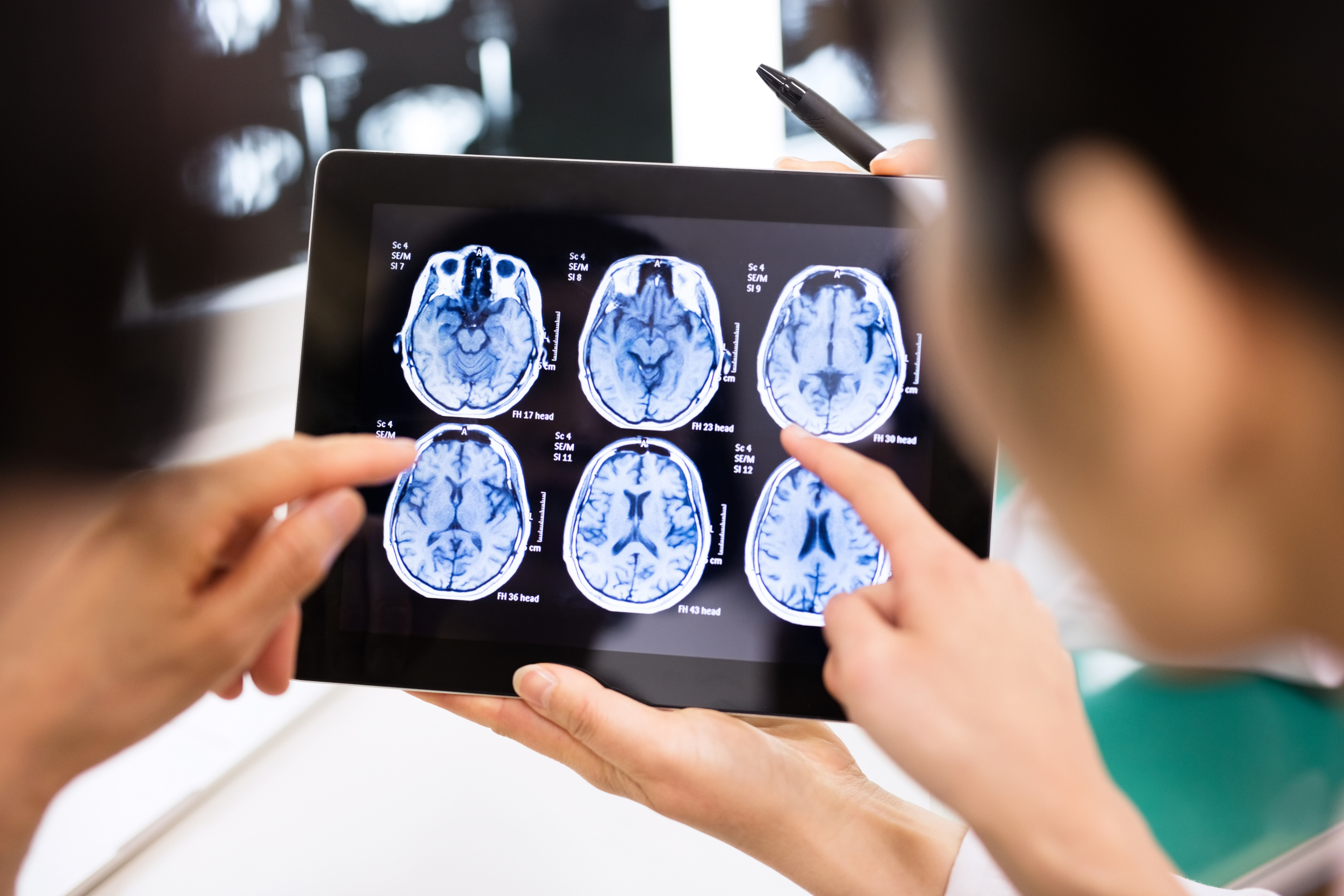
Blood Tests and Cultures
Blood tests play a crucial role in diagnosing meningitis and identifying its cause. Key blood tests include:
- Complete blood count (CBC): Checks for elevated white blood cell levels, indicating infection
- Total protein count: Assesses protein levels that may be elevated in meningitis
- Procalcitonin test: Helps differentiate between bacterial and viral infections
- Blood cultures: Identify specific bacteria causing the infection
How long does it take to get results from a blood culture? Blood culture results typically take several days, as bacteria need time to grow in the culture medium. However, preliminary results may be available sooner through microscopic examination of stained blood samples.
Cerebrospinal Fluid Analysis
A lumbar puncture, also known as a spinal tap, is often considered the gold standard for diagnosing meningitis. This procedure involves collecting a sample of cerebrospinal fluid (CSF) for analysis. The CSF is examined for:
- White blood cell count
- Protein and glucose levels
- Presence of bacteria, viruses, or fungi
CSF analysis can provide valuable information about the type and severity of meningitis, guiding treatment decisions.

Imaging Studies
Imaging tests such as CT scans and MRIs can be valuable tools in the diagnosis and management of meningitis. These studies can:
- Detect signs of brain inflammation
- Identify complications such as brain swelling or abscesses
- Guide decision-making regarding the safety of performing a lumbar puncture
In some cases, imaging studies may reveal alternative diagnoses that can mimic meningitis symptoms, such as intracranial hemorrhage or tumors.
Treatment Approaches for Different Types of Meningitis
The treatment of meningitis varies depending on the underlying cause and severity of the infection. Understanding the different approaches can help patients and caregivers navigate the treatment process more effectively.
Bacterial Meningitis Treatment
Bacterial meningitis requires immediate antibiotic treatment to prevent severe complications and reduce the risk of mortality. The choice of antibiotics may initially be broad-spectrum and later tailored based on culture results. Additional treatments may include:

- Corticosteroids to reduce inflammation
- Intravenous fluids for hydration
- Medications to manage symptoms such as pain and fever
How long does antibiotic treatment for bacterial meningitis typically last? The duration of antibiotic therapy can range from 7 to 21 days, depending on the specific bacteria causing the infection and the patient’s response to treatment.
Viral Meningitis Management
Viral meningitis often resolves on its own without specific antiviral treatment. Management typically focuses on supportive care, including:
- Rest and hydration
- Over-the-counter pain relievers for headache and fever
- Antiviral medications in certain cases, such as herpes virus infections
While viral meningitis is generally less severe than bacterial meningitis, patients should still be monitored closely for any signs of worsening symptoms or complications.
Fungal Meningitis Treatment
Fungal meningitis, though rare, requires targeted antifungal therapy. Treatment may involve:
- Intravenous antifungal medications
- Extended treatment courses, often lasting several weeks to months
- Close monitoring of liver function and other potential side effects
The specific antifungal regimen depends on the type of fungus identified and the patient’s overall health status.

Prevention and Long-Term Outlook for Meningitis Patients
While not all cases of meningitis can be prevented, certain measures can reduce the risk of infection and improve outcomes for those affected.
Vaccination and Preventive Measures
Vaccines are available to protect against several common causes of bacterial meningitis, including:
- Meningococcal disease
- Pneumococcal disease
- Haemophilus influenzae type b (Hib)
Additionally, practicing good hygiene, such as frequent handwashing and avoiding close contact with individuals who have respiratory infections, can help reduce the risk of viral meningitis.
Long-Term Prognosis and Follow-Up Care
The long-term outlook for meningitis patients varies depending on the type of infection and how quickly treatment was initiated. Potential long-term effects may include:
- Hearing loss
- Cognitive impairments
- Seizures
- Balance problems
Regular follow-up care and monitoring are essential for identifying and addressing any lingering effects of the infection. Rehabilitation services may be beneficial for patients experiencing persistent neurological symptoms.
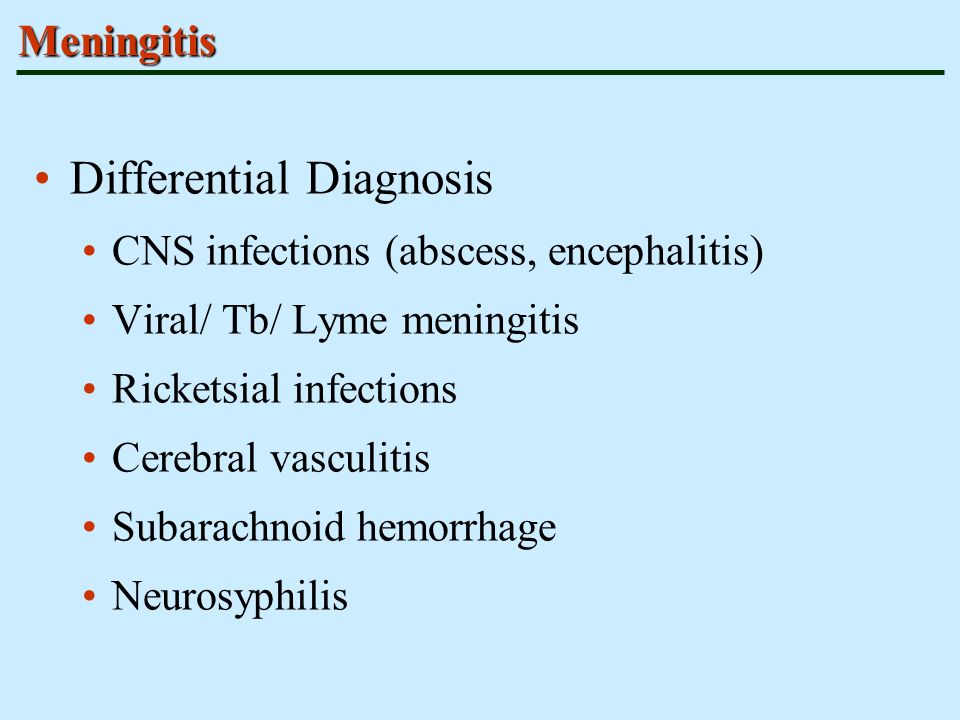
Emerging Research and Future Directions in Meningitis Management
The field of meningitis research continues to evolve, with ongoing efforts to improve diagnosis, treatment, and prevention strategies. Some areas of active investigation include:
- Development of rapid diagnostic tests for faster identification of causative agents
- Novel antibiotic and antiviral therapies to combat drug-resistant strains
- Improved vaccine formulations to provide broader protection against meningitis-causing pathogens
- Research into the long-term neurological effects of meningitis and potential interventions to mitigate these impacts
How might these advancements change the landscape of meningitis management in the coming years? As research progresses, we can anticipate more targeted and effective treatments, enhanced prevention strategies, and improved outcomes for patients affected by this serious condition.
The Role of Genetic Factors in Meningitis Susceptibility and Outcomes
Recent studies have begun to explore the genetic factors that may influence an individual’s susceptibility to meningitis and their response to treatment. This emerging field of research holds promise for:

- Identifying high-risk individuals who may benefit from more aggressive preventive measures
- Developing personalized treatment approaches based on genetic profiles
- Enhancing our understanding of the complex interactions between pathogens and the human immune system
As our knowledge of the genetic underpinnings of meningitis expands, it may pave the way for more precise and effective strategies for prevention, diagnosis, and treatment.
Global Perspectives on Meningitis: Challenges and Opportunities
Meningitis remains a significant public health concern worldwide, with varying impacts across different regions and populations. Understanding the global landscape of meningitis can provide valuable insights into:
- Disparities in access to diagnosis and treatment
- The importance of international collaboration in research and surveillance
- Strategies for implementing effective vaccination programs in resource-limited settings
How can global efforts to combat meningitis be strengthened? Initiatives such as the World Health Organization’s Global Roadmap to Defeat Meningitis by 2030 aim to coordinate international efforts to reduce the burden of this disease. Key focus areas include:
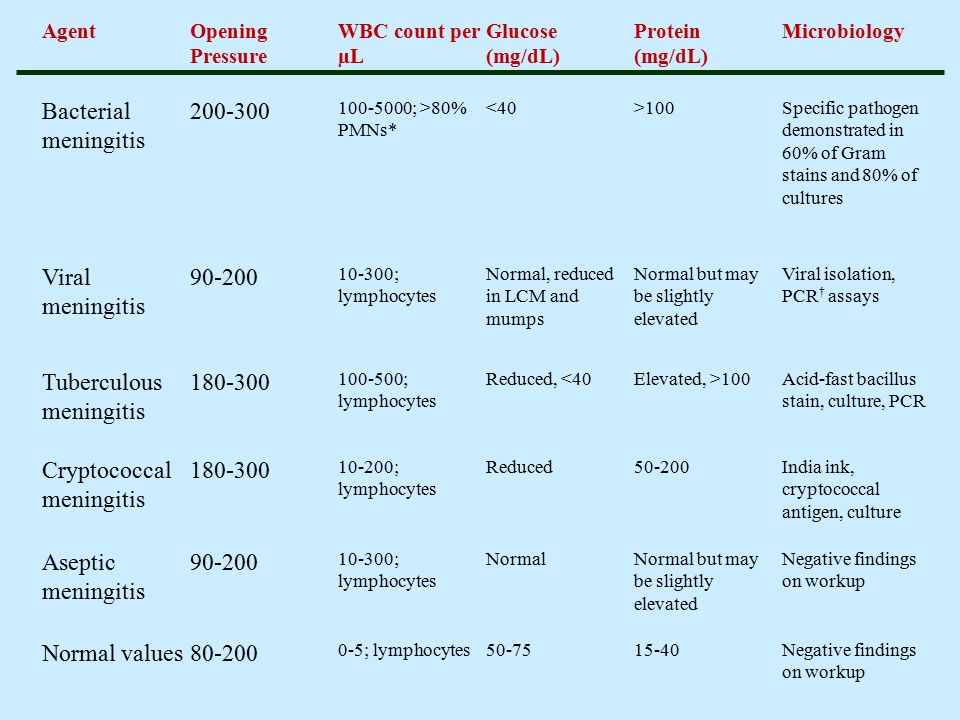
- Expanding vaccine coverage in high-risk regions
- Improving surveillance and early warning systems
- Enhancing diagnostic capabilities in low-resource settings
- Promoting research and development of new prevention and treatment tools
By addressing meningitis on a global scale, we can work towards reducing its impact and improving outcomes for affected individuals worldwide.
The Impact of Climate Change on Meningitis Epidemiology
Emerging research suggests that climate change may influence the patterns and prevalence of meningitis in certain regions. Factors such as altered rainfall patterns, increased temperatures, and changes in human migration patterns could potentially affect:
- The geographic distribution of meningitis-causing pathogens
- The seasonality of meningitis outbreaks
- The emergence of new or previously uncommon causative agents
Understanding these complex interactions between climate, pathogens, and human populations will be crucial for developing adaptive strategies to mitigate the potential impacts of climate change on meningitis epidemiology.

Empowering Patients and Communities: Education and Awareness
Raising awareness about meningitis and its symptoms is crucial for early detection and improved outcomes. Effective education initiatives can focus on:
- Recognizing early warning signs of meningitis
- Understanding the importance of prompt medical attention
- Promoting vaccination and other preventive measures
- Addressing misconceptions and stigma associated with the disease
How can healthcare providers and public health officials effectively communicate the importance of meningitis awareness? Some strategies include:
- Developing clear, accessible educational materials in multiple languages
- Utilizing social media and digital platforms to reach diverse populations
- Collaborating with community leaders and organizations to disseminate information
- Incorporating meningitis education into school health programs and workplace wellness initiatives
By empowering individuals and communities with knowledge about meningitis, we can create a more informed and proactive approach to managing this serious condition.
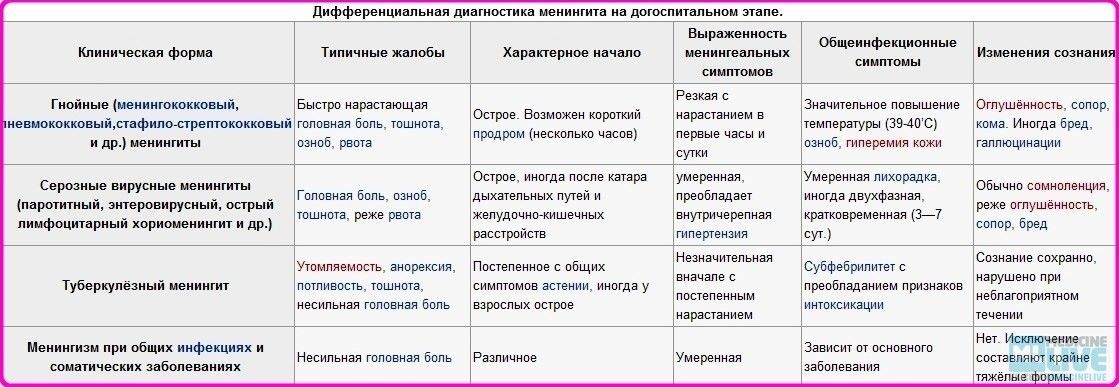
The Role of Support Groups and Patient Advocacy
For individuals and families affected by meningitis, support groups and patient advocacy organizations can provide valuable resources and connections. These groups often offer:
- Emotional support and shared experiences
- Access to up-to-date information on treatment options and research
- Advocacy for improved healthcare policies and research funding
- Assistance in navigating long-term care and rehabilitation services
Engaging with these support networks can help patients and caregivers feel less isolated and more empowered in their journey with meningitis.
Neck, Physical Exam, at Home, and More
Testing for meningitis can include various tests, including a physical exam, blood tests, bacterial cultures, and cerebrospinal fluid tests.
Meningitis happens when the membranes, or meninges, around your spinal cord and brain become swollen from inflammation.
Four types of meningitis are possible:
- Bacterial: The most severe and life-threatening form of meningitis. This type can be fatal if it’s not treated immediately with antibiotics to prevent the spread of the infection and further complications.
- Viral (aseptic): The most common cause of a meningitis infection. This type usually isn’t as serious as bacterial meningitis and often goes away without requiring treatment.
- Fungal: This uncommon type is caused by a fungus that gets into your spinal cord from your bloodstream.
- Parasitic: This much less common form of meningitis is caused by parasites.

You don’t always need treatment for nonbacterial meningitis. The infection may clear up on its own. Meningitis can be mistaken for the flu, dehydration, or gastroenteritis. It can also be overlooked because symptoms may be mild or not always apparent.
Seek emergency medical attention if you notice any symptoms of meningitis. You should also contact your doctor if someone close to you at home or work has been diagnosed. Watch out for these symptoms:
- having severe neck stiffness with no apparent cause
- experiencing a constant, painful headache
- feeling disoriented
- feeling sick and throwing up
- running a high fever (101°F and higher), particularly with the above symptoms
Early treatment, within 2 to 3 days (less than 1 day is recommended), can help prevent long-term or severe complications. Bacterial meningitis can quickly become deadly or cause brain damage in a few days without antibiotics.
Your doctor will conduct a full physical examination as the first step in looking for signs of meningitis.
First, your doctor will ask you about your symptoms, your medical history, and whether you’ve been on any recent trips to regions with a higher rate of certain types of meningitis.
Then, your doctor will check your entire body for any unusual markings, signs, or lumps. A purplish or reddish skin rash that doesn’t get lighter or disappear when you press against it can be a sign of severe infection with one of the types of bacteria that causes meningitis.
Your doctor may also look for two specific signs of a meningitis infection:
- Brudzinski’s sign: Your doctor will pull your neck forward slowly. Neck stiffness and involuntary bending of the knees and hips can indicate meningitis.
- Kernig’s sign: Your doctor will flex your leg at the knee and bend the leg forward at the hip. Then, they’ll slowly straighten your leg. Intense pain in your back or thigh can indicate meningitis. Your doctor may repeat this test on both legs.

However, more recent research shows that many people with meningitis doesn’t display these signs. A negative result on either of these tests doesn’t rule out the possibility of meningitis.
To take a bacterial culture, your doctor will collect a blood sample through a needle in a vein in your arm. The blood is transferred to small dishes known as petri dishes. Bacteria or other microorganisms can grow and become more abundant in these nutrient-rich dishes.
After a certain period of time (usually a few days), your doctor can look at the bacteria through a microscope and diagnose the specific bacteria causing an infection in the blood.
Your doctor can also put a sample on a microscope slide and stain it so that the bacteria are easier to see under a microscope. The results of this test may come back earlier than those from a culture.
To do a blood test for signs of meningitis, a technician inserts a needle into a vein in your arm and draws out a sample of your blood to send to a lab for testing.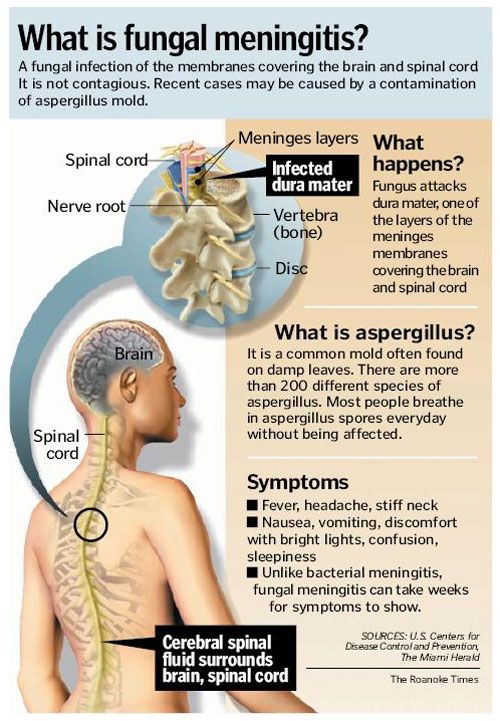
A complete blood count (CBC) or total protein count check for heightened levels of certain cells and proteins that can suggest a meningitis infection.
A procalcitonin blood test can also help your doctor tell if an infection is more likely caused by either bacteria or a virus.
Blood tests may also be done at the same time as a spinal tap to compare the levels of cells, antibodies, and proteins and confirm the diagnosis.
An imaging test, such as computerized tomography (CT) scan, allows your doctor to take detailed images of your head and chest to look for signs of brain and spine inflammation associated with meningitis and help confirm a diagnosis.
A CT scan, in addition to magnetic resonance imaging (MRI) and X-ray imaging tests, can also help your doctor notice other things that can cause severe symptoms of meningitis, such as:
- internal bleeding (hemorrhage)
- fluid buildup in tissue (abscess)
- swelling of the brain
These conditions may make it dangerous or impossible for your doctor to perform a spinal tap, so imaging tests are typically done before your doctor decides whether to do a spinal tap.
This is the only test that can truly diagnose meningitis. To perform this test, your doctor inserts a needle into your spine in order to collect cerebrospinal fluid (CSF) that’s found around your brain and spinal cord. Then, your doctor sends your CSF to a lab for testing. Meningitis is often confirmed when your CSF fluid has:
- low levels of sugar (glucose)
- high levels of white blood cells
- high levels of blood protein
- heightened level of antibodies responding to infection
A CSF test can also help your doctor figure out what type of bacteria or virus caused your meningitis.
Your doctor may also request a polymerase chain reaction (PCR) test. This test can analyze your CSF fluid for antibodies that increase in number during viral infections to decide what treatment will work best.
In theory, it’s possible to do the Brudzinski and Kernig tests at home to check for meningitis. However, you should still see your doctor for a diagnosis.:quality(70)/cloudfront-us-east-1.images.arcpublishing.com/gruponacion/ZSBKTOQPQNGI3JLD2RNLKAI6JM.jpg) These tests need to be performed by a professional — and even then they aren’t reliable as a sole method of diagnosis.
These tests need to be performed by a professional — and even then they aren’t reliable as a sole method of diagnosis.
Remember that meningitis can be dangerous. Even if you could diagnose it at home, you wouldn’t be able to determine which type you have, and some types are life-threatening. Get emergency medical help if you have these symptoms:
- neck stiffness
- constant, painful headache
- feelings of disorientation
- vomiting or nausea
- high fever (101°F and higher)
Here’s how to do the Brudzinski test at home:
- Lie flat on your back.
- Gently and slowly push on the back of your neck so that your head moves forward. For better results, have someone do this for you.
- Note if your hips and knees flex involuntarily as you raise your head. This is a positive Brudzinski sign, meaning that you may have meningitis.
And the Kernig test:
- Lie flat on your back.
- Lift your leg up at the hip and bend your knee to a 90-degree angle.

- Gently and slowly lift your leg up at the knee.
- Note if your back or thigh starts to hurt. This is a positive Kernig sign, meaning that you may have meningitis.
Always see your doctor for a diagnosis.
The different types of meningitis have different causes:
- Bacterial meningitis happens when bacteria pass through your blood into the CSF. Bacteria can also get into your meninges and infect them directly. Bacteria can be spread through infected blood.
- Viral (aseptic) meningitis happens when a virus gets into your CSF from your bloodstream. This can be caused by many types of viruses, such as the herpes virus, HIV, West Nile virus, and enteroviruses.
- Fungal meningitis happens when a fungus, such as Cryptococcus, gets into your meninges or CSF from your bloodstream. It’s most common in people who have weak or compromised immune systems from cancer or HIV.
- Parasitic meningitis happens when a parasite gets into your meninges or CSF from the bloodstream.
 It’s often caused by eating or drinking something that’s been contaminated by an infectious parasite that normally only infects animals.
It’s often caused by eating or drinking something that’s been contaminated by an infectious parasite that normally only infects animals.
Bacterial meningitis needs to be treated right away or it may result in severe complications, such as brain damage, or become deadly.
Seek emergency medical attention if you think you have a bacterial meningitis infection. Early and effective treatment can save your life and reduce your chance of complications.
Other causes may go away after a few days without treatment. See your doctor as soon as you can if you suspect that you have a meningitis infection caused by a virus or parasite.
Neck, Physical Exam, at Home, and More
Testing for meningitis can include various tests, including a physical exam, blood tests, bacterial cultures, and cerebrospinal fluid tests.
Meningitis happens when the membranes, or meninges, around your spinal cord and brain become swollen from inflammation.
Four types of meningitis are possible:
- Bacterial: The most severe and life-threatening form of meningitis.
 This type can be fatal if it’s not treated immediately with antibiotics to prevent the spread of the infection and further complications.
This type can be fatal if it’s not treated immediately with antibiotics to prevent the spread of the infection and further complications. - Viral (aseptic): The most common cause of a meningitis infection. This type usually isn’t as serious as bacterial meningitis and often goes away without requiring treatment.
- Fungal: This uncommon type is caused by a fungus that gets into your spinal cord from your bloodstream.
- Parasitic: This much less common form of meningitis is caused by parasites.
You don’t always need treatment for nonbacterial meningitis. The infection may clear up on its own. Meningitis can be mistaken for the flu, dehydration, or gastroenteritis. It can also be overlooked because symptoms may be mild or not always apparent.
Seek emergency medical attention if you notice any symptoms of meningitis. You should also contact your doctor if someone close to you at home or work has been diagnosed. Watch out for these symptoms:
Watch out for these symptoms:
- having severe neck stiffness with no apparent cause
- experiencing a constant, painful headache
- feeling disoriented
- feeling sick and throwing up
- running a high fever (101°F and higher), particularly with the above symptoms
Early treatment, within 2 to 3 days (less than 1 day is recommended), can help prevent long-term or severe complications. Bacterial meningitis can quickly become deadly or cause brain damage in a few days without antibiotics.
Your doctor will conduct a full physical examination as the first step in looking for signs of meningitis.
First, your doctor will ask you about your symptoms, your medical history, and whether you’ve been on any recent trips to regions with a higher rate of certain types of meningitis.
Then, your doctor will check your entire body for any unusual markings, signs, or lumps. A purplish or reddish skin rash that doesn’t get lighter or disappear when you press against it can be a sign of severe infection with one of the types of bacteria that causes meningitis.
Your doctor may also look for two specific signs of a meningitis infection:
- Brudzinski’s sign: Your doctor will pull your neck forward slowly. Neck stiffness and involuntary bending of the knees and hips can indicate meningitis.
- Kernig’s sign: Your doctor will flex your leg at the knee and bend the leg forward at the hip. Then, they’ll slowly straighten your leg. Intense pain in your back or thigh can indicate meningitis. Your doctor may repeat this test on both legs.
However, more recent research shows that many people with meningitis doesn’t display these signs. A negative result on either of these tests doesn’t rule out the possibility of meningitis.
To take a bacterial culture, your doctor will collect a blood sample through a needle in a vein in your arm. The blood is transferred to small dishes known as petri dishes. Bacteria or other microorganisms can grow and become more abundant in these nutrient-rich dishes.
After a certain period of time (usually a few days), your doctor can look at the bacteria through a microscope and diagnose the specific bacteria causing an infection in the blood.
Your doctor can also put a sample on a microscope slide and stain it so that the bacteria are easier to see under a microscope. The results of this test may come back earlier than those from a culture.
To do a blood test for signs of meningitis, a technician inserts a needle into a vein in your arm and draws out a sample of your blood to send to a lab for testing.
A complete blood count (CBC) or total protein count check for heightened levels of certain cells and proteins that can suggest a meningitis infection.
A procalcitonin blood test can also help your doctor tell if an infection is more likely caused by either bacteria or a virus.
Blood tests may also be done at the same time as a spinal tap to compare the levels of cells, antibodies, and proteins and confirm the diagnosis.
An imaging test, such as computerized tomography (CT) scan, allows your doctor to take detailed images of your head and chest to look for signs of brain and spine inflammation associated with meningitis and help confirm a diagnosis.
A CT scan, in addition to magnetic resonance imaging (MRI) and X-ray imaging tests, can also help your doctor notice other things that can cause severe symptoms of meningitis, such as:
- internal bleeding (hemorrhage)
- fluid buildup in tissue (abscess)
- swelling of the brain
These conditions may make it dangerous or impossible for your doctor to perform a spinal tap, so imaging tests are typically done before your doctor decides whether to do a spinal tap.
This is the only test that can truly diagnose meningitis. To perform this test, your doctor inserts a needle into your spine in order to collect cerebrospinal fluid (CSF) that’s found around your brain and spinal cord. Then, your doctor sends your CSF to a lab for testing.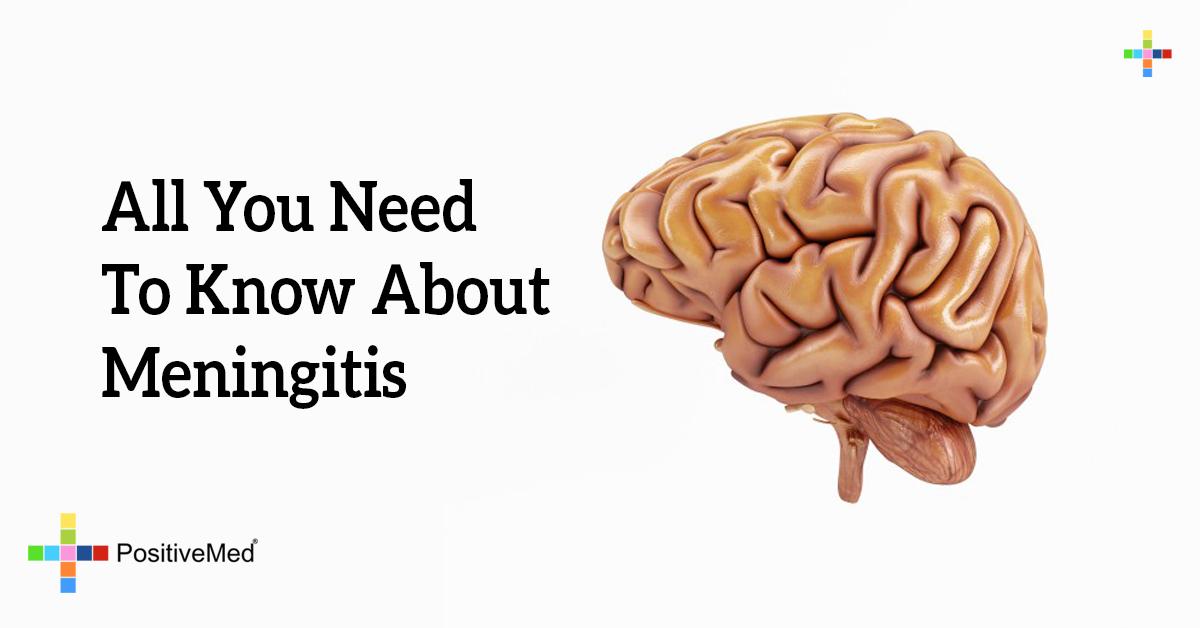 Meningitis is often confirmed when your CSF fluid has:
Meningitis is often confirmed when your CSF fluid has:
- low levels of sugar (glucose)
- high levels of white blood cells
- high levels of blood protein
- heightened level of antibodies responding to infection
A CSF test can also help your doctor figure out what type of bacteria or virus caused your meningitis.
Your doctor may also request a polymerase chain reaction (PCR) test. This test can analyze your CSF fluid for antibodies that increase in number during viral infections to decide what treatment will work best.
In theory, it’s possible to do the Brudzinski and Kernig tests at home to check for meningitis. However, you should still see your doctor for a diagnosis. These tests need to be performed by a professional — and even then they aren’t reliable as a sole method of diagnosis.
Remember that meningitis can be dangerous. Even if you could diagnose it at home, you wouldn’t be able to determine which type you have, and some types are life-threatening.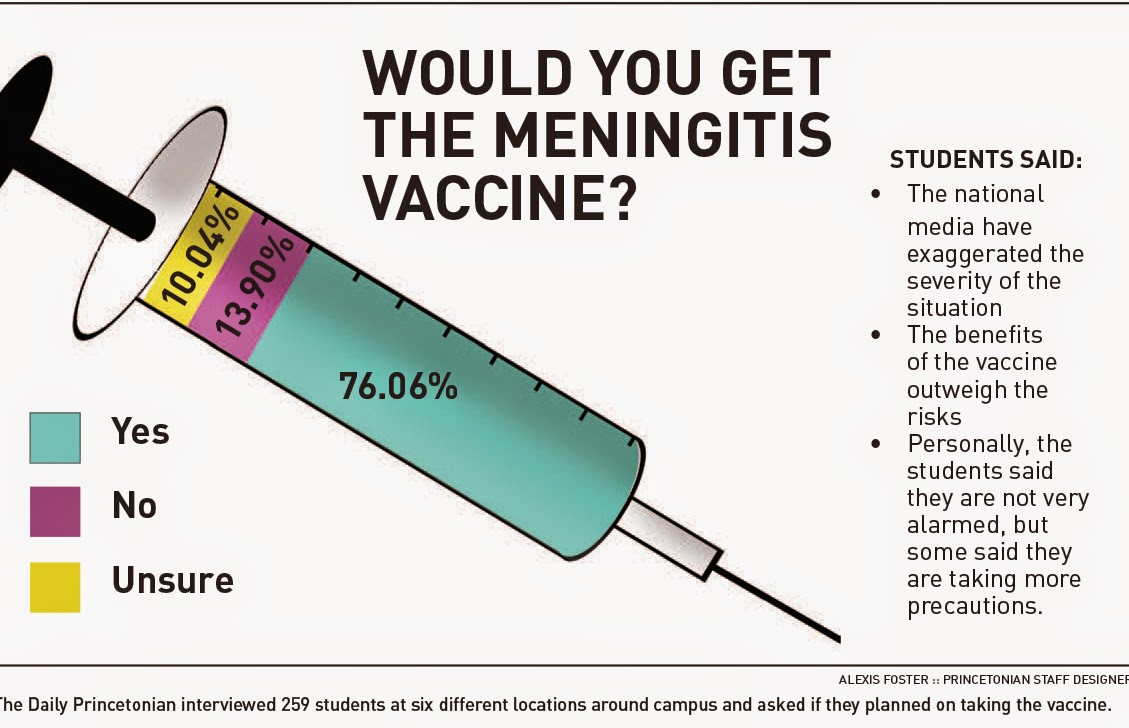 Get emergency medical help if you have these symptoms:
Get emergency medical help if you have these symptoms:
- neck stiffness
- constant, painful headache
- feelings of disorientation
- vomiting or nausea
- high fever (101°F and higher)
Here’s how to do the Brudzinski test at home:
- Lie flat on your back.
- Gently and slowly push on the back of your neck so that your head moves forward. For better results, have someone do this for you.
- Note if your hips and knees flex involuntarily as you raise your head. This is a positive Brudzinski sign, meaning that you may have meningitis.
And the Kernig test:
- Lie flat on your back.
- Lift your leg up at the hip and bend your knee to a 90-degree angle.
- Gently and slowly lift your leg up at the knee.
- Note if your back or thigh starts to hurt. This is a positive Kernig sign, meaning that you may have meningitis.
Always see your doctor for a diagnosis.
The different types of meningitis have different causes:
- Bacterial meningitis happens when bacteria pass through your blood into the CSF.
 Bacteria can also get into your meninges and infect them directly. Bacteria can be spread through infected blood.
Bacteria can also get into your meninges and infect them directly. Bacteria can be spread through infected blood. - Viral (aseptic) meningitis happens when a virus gets into your CSF from your bloodstream. This can be caused by many types of viruses, such as the herpes virus, HIV, West Nile virus, and enteroviruses.
- Fungal meningitis happens when a fungus, such as Cryptococcus, gets into your meninges or CSF from your bloodstream. It’s most common in people who have weak or compromised immune systems from cancer or HIV.
- Parasitic meningitis happens when a parasite gets into your meninges or CSF from the bloodstream. It’s often caused by eating or drinking something that’s been contaminated by an infectious parasite that normally only infects animals.
Bacterial meningitis needs to be treated right away or it may result in severe complications, such as brain damage, or become deadly.
Seek emergency medical attention if you think you have a bacterial meningitis infection. Early and effective treatment can save your life and reduce your chance of complications.
Early and effective treatment can save your life and reduce your chance of complications.
Other causes may go away after a few days without treatment. See your doctor as soon as you can if you suspect that you have a meningitis infection caused by a virus or parasite.
how to recognize them and what to do?
Contents
- 1 How to recognize the early signs and symptoms of meningitis in a child: important information for parents
- 1.1 What is meningitis?
- 1.2 How do I recognize the symptoms of meningitis in a child?
- 1.2.1 The main symptoms of meningitis in a child:
- 1.3 What are the first signs that may appear?
- 1.4 What should I do if my child complains of a headache?
- 1.5 What additional symptoms may occur?
- 1.6 How to be sure of the diagnosis?
- 1.7 What should I do if my child has signs of meningitis?
- 1.8 How is meningitis treated?
- 1.9 Can there be consequences?
- 1.
 10 How can I protect my child from meningitis?
10 How can I protect my child from meningitis? - 1.11 When should I see a doctor?
- 1.12 Related videos:
- 1.13 Q&A:
- 1.13.0.1 What are the first symptoms of meningitis in a child?
- 1.13.0.2 What are the possible consequences of meningitis in a child?
- 1.13.0.3 How can meningitis be diagnosed in a child?
- 1.13.0.4 How is meningitis treated in a child?
- 1.13.0.5 How is meningitis prevented in children?
- 1.13.0.6 How likely is a child to recover from meningitis?
Learn about the early signs and symptoms of meningitis in children so that you can detect the disease as early as possible and take the necessary treatment measures. Pay attention to headaches, nausea, vomiting, fever and other symptoms!
Meningitis is a dangerous disease caused by inflammation of the meninges. Children and young people are mostly affected. Because of the possible complications associated with this disease, it is important to know what are the first symptoms of meningitis in a child and what to do in such cases.
Symptoms of meningitis in a child can manifest themselves in different ways, depending on the age, health and body of the child. About half of children with meningitis suffer from headaches and fever, but this may not be the only manifestation of the disease. Some children may suffer from muscle pain, sweating, vomiting, or even seizures. Therefore, it is important to pay attention to all the changes that occur with the health of the child, and judge by them the need to consult a doctor.
Let’s take a closer look at what are the first signs of meningitis in children, and what to do in such cases.
What is meningitis?
Meningitis is a dangerous inflammatory disease in which the membranes of the brain and spinal cord, the meningoencephalic membranes, become inflamed. It can be caused by various bacterial, viral or fungal infections. Meningitis often occurs in children under the age of five.
Meningitis can lead to serious complications such as depression of consciousness, paralysis, weakness, convulsions, impaired vision and hearing, and in severe cases, death.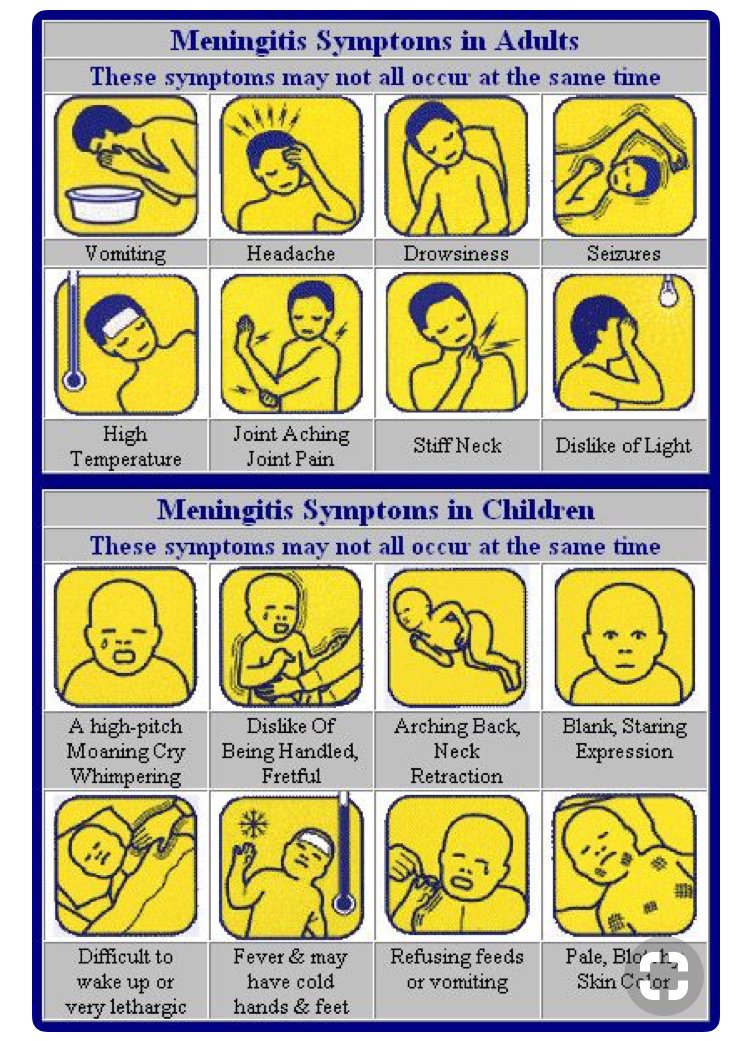 Therefore, it is important to establish a diagnosis and start treatment as soon as possible.
Therefore, it is important to establish a diagnosis and start treatment as soon as possible.
How to recognize the symptoms of meningitis in a child?
Meningitis is a serious disease that can lead to complications and even death if not addressed in time. Early recognition of the symptoms of meningitis in a child is essential to prompt treatment.
Main symptoms of meningitis in a child:
- High body temperature
- Headache
- Nausea and vomiting
- Complaints of severe abdominal pain
- Complaints of pain in the neck and back
- Rash on the skin
- Seizures
- Severe weakness and drowsiness
If your child has these symptoms, see a doctor immediately. The severity of the disease can be different, so treatment should be carried out under the supervision of specialists.
If you suspect meningitis, do not delay your visit to the doctor. In turn, parents should also know how to prevent meningitis in children: follow the rules of hygiene, avoid crowds during epidemics, etc.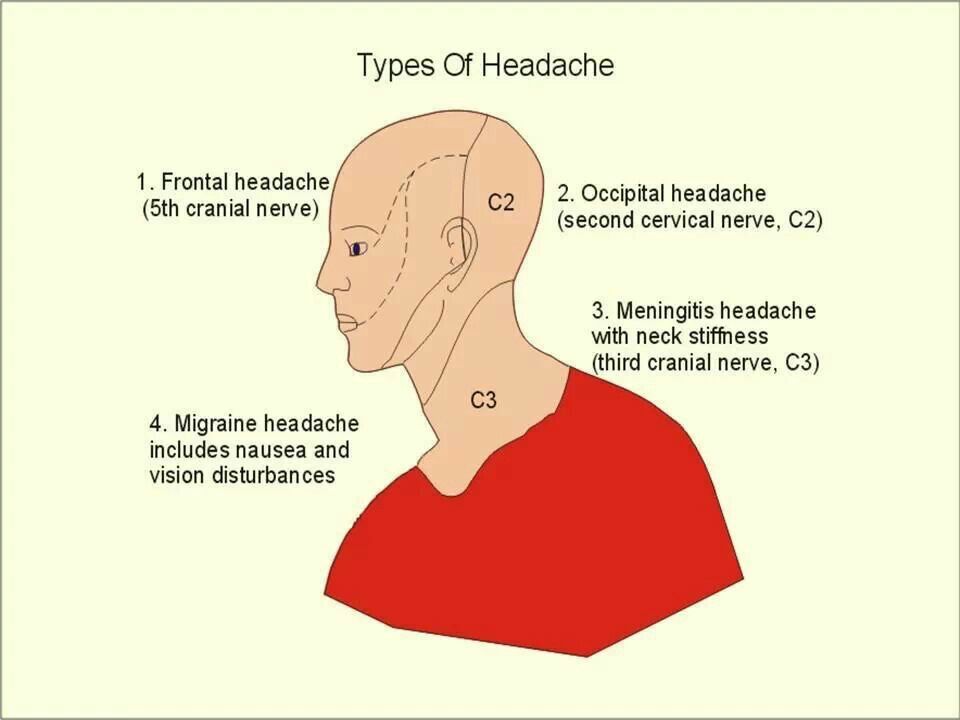 Small precautions can save you a lot of worry and suffering down the road.
Small precautions can save you a lot of worry and suffering down the road.
What are the first signs that may appear?
High body temperature is one of the most obvious symptoms of meningitis. The child may experience fever and chills, and the body temperature may rise to 39 or 40 degrees. If a child suddenly has a high temperature, then this may be the first sign of meningitis, in which case parents should immediately consult a doctor.
Headache is another common symptom of meningitis. The child may report heaviness in the head, complaints of pain or pressure in the occipital region of the head. Some children may experience severe pain in or behind the eyes. The pain in the head may increase when bending the head, coughing or sneezing. If your child has these symptoms, there is no need to panic, but you should see a doctor as soon as possible.
Nausea and vomiting are other symptoms of meningitis. That is why the disease is often misdiagnosed as the stomach flu or other infection of the gastrointestinal tract. However, if the child experiences vomiting or nausea accompanied by other symptoms, this may indicate meningitis.
That is why the disease is often misdiagnosed as the stomach flu or other infection of the gastrointestinal tract. However, if the child experiences vomiting or nausea accompanied by other symptoms, this may indicate meningitis.
- Some other early signs of meningitis to look out for:
- General weakness
- Severe pain
- Photophobia (the child may complain of pain in the eyes when the increased brightness of light enters the eyes)
- Increased irritability
- Trouble sleeping
If your child experiences any of the above symptoms, see a doctor as soon as possible. If medical attention is delayed, life-threatening complications can occur.
What should I do if my child complains of a headache?
Headache is a very common symptom experienced by children and adults. In children, headaches can be caused by a variety of causes, from the slightest overwork to serious illnesses such as meningitis. If your child complains of a headache, appropriate action must be taken.
1. Determine the cause of the headache. Talk to your child and ask him or her to describe the symptoms and circumstances in which the headache began. Maybe he got bored at the lesson, he walked on the street without a hat, he was bored or did not sleep. It is also necessary to pay attention to accompanying symptoms, such as nausea, vomiting and fever.
2. Give first aid. If the headache is not too severe, try a light massage to improve circulation. Give your child a moderate amount of water, as dehydration can cause headaches.
3. Consult a doctor. If the headache is severe or lasts more than an hour, see your doctor. The doctor will examine you and prescribe the necessary treatment. Do not ignore this symptom, as there may be irreversible consequences.
Remember that a headache is not a disease, but a symptom that can be caused by various causes. If you notice a headache in yourself or your child, carefully monitor the causes and symptoms. Don’t wait until the headache becomes too severe, see your doctor in a timely manner.
Don’t wait until the headache becomes too severe, see your doctor in a timely manner.
What additional symptoms may occur?
In addition to the main symptoms of meningitis in a child, such as fever, headache, and neck stiffness, a number of additional symptoms may occur.
- Shortness of breath – Meningitis may cause difficulty breathing or shortness of breath, which may be a sign of an airway problem.
- Rash – The child may develop a rash that does not go away when pressed, this may be a sign of inflammation of the brain.
- Irritability – the child may become nervous and irritable, refuse to eat and drink.
- Decreased consciousness – in case of severe course of the disease, loss of consciousness, drowsiness, coma may occur.
If the child begins to show additional symptoms, this may be a signal that his condition is getting worse. In such a situation, you should immediately consult a doctor.
How to be sure of the diagnosis?
Diagnosing meningitis in a child is a difficult process, as its symptoms may overlap with those of other diseases. Therefore, it is very important to bring the child to the doctor as soon as possible.
If meningitis has been diagnosed, the doctor will prescribe treatment, which may include antibiotics and other drugs. It is important to remember that treatment must be started as early as possible in order to avoid complications and consequences for the health of the child. It is also recommended to monitor the condition of the child and seek medical help in a timely manner.
What should I do if my child has signs of meningitis?
If your child has signs of meningitis, call 911 first. Even if you are not sure that it is meningitis, it is better to play it safe and seek the help of doctors. The sooner treatment begins, the higher the chances of a full recovery.
Until the ambulance arrives, it is recommended to keep the child as quiet as possible and not to touch his head. If a child complains of a severe headache, you can give him pain medication, but only after consulting a doctor.
If a child complains of a severe headache, you can give him pain medication, but only after consulting a doctor.
If meningitis is suspected, home treatment should not be attempted. Only specialists can prescribe adequate therapy and prevent possible complications.
- Call an ambulance;
- Keep your child as comfortable as possible;
- Do not give painkillers without consulting your doctor;
- Do not attempt self-treatment.
How is meningitis treated?
Treating meningitis in a child can be a long and difficult process. It depends on the type of meningitis, the age of the child, the presence of complications, and other factors. Antibiotics and other medicines are usually used to treat meningitis.
An important step in the treatment of meningitis is the maintenance of vital body functions. It turns out intensive therapy, measures are taken to correct violations of breathing, blood circulation, metabolism and other body systems.
Recovery from meningitis can take a long time. Especially careful care and rehabilitation measures are necessary for acute meningitis in young children. During the rehabilitation period, it is important to monitor the health of the child, ensure proper and rational nutrition, conduct physical exercises and engage in speech therapy, psychological or physiotherapy, if necessary.
Can there be consequences?
Symptoms of meningitis in a child can appear very quickly, but they can also disappear quickly with treatment. However, even after a full recovery, the child may still have some consequences.
If the diagnosis of meningitis was established on time and the treatment was carried out correctly, then the likelihood of side effects is minimal. However, if meningitis has left side effects, they can be varied and of varying severity, depending on how severe the meningitis was.
Typically, after meningitis, the child may experience fatigue, drowsiness and headaches. He may be irritable, his expression of emotions may change, and there may also be problems with sleep and appetite.
He may be irritable, his expression of emotions may change, and there may also be problems with sleep and appetite.
Although the residual effects of meningitis are quite rare, they can still occur even with good medical care. If the child has some problems after recovery, then a special medical examination should be carried out. Timely treatment will help to avoid further problems and side effects that can cause meningitis.
How can I protect my child from meningitis?
Take root. Proper vaccination is the main method of protection against meningitis. Some parents think that vaccinations are overly complicated and expensive, but they are not. Many vaccinations are included in the compulsory vaccination calendar, which are given free of charge in polyclinics. Discuss with your pediatrician which additional vaccines are recommended to protect your child.
Avoid contact with infected people. Meningitis can be transmitted through saliva or coughing. If your child attends kindergarten or school, pay attention to hygiene measures to reduce the risk of infection.
If your child attends kindergarten or school, pay attention to hygiene measures to reduce the risk of infection.
Wash your hands and face often. Washing your hands and face regularly will help you avoid contracting meningitis. Children need to know how to properly wash their hands. Remember that children often touch dirty surfaces, so try to keep them hygienic.
Try to lead a healthy lifestyle. A healthy lifestyle increases resistance to various infections, including meningitis. Less resistant to infections are children who move little, eat poorly or have chronic diseases.
- To summarize?
- Vaccination is the best protection against meningitis;
- good hygiene and avoidance of contact with those who are infected also reduce the risk of infection;
- A healthy lifestyle increases resistance to infections.
When should I see a doctor?
If a child complains of headache, extreme fatigue, loss of appetite and activity, this may be the first sign of meningitis. If nausea, vomiting, high body temperature and photophobia are added to these symptoms, emergency medical attention is needed.
If nausea, vomiting, high body temperature and photophobia are added to these symptoms, emergency medical attention is needed.
If parents think that the child is in too much pain or is excessively weak and sleepy, it is also worth contacting a doctor. This will allow you to quickly identify the disease, diagnose and begin the treatment.
If a child is constantly involved in sports, then the signs of the disease can be hidden under everyday pain. Therefore, it is important to pay attention to the child and, at the first signs of illness, do not postpone going to the doctor.
- Important! Do not try to self-treat a child at the first symptoms of meningitis. This can only worsen the patient’s condition.
Related videos:
Q&A:
What are the first symptoms of meningitis in a child?
The first symptom of meningitis in a child may be fever, headache, vomiting, weakness, convulsions, confusion or irritability.:max_bytes(150000):strip_icc()/meningitis-overview-2632037_final-cee83b2ec2344403975479ec3099bedd.png) If these symptoms occur, you should consult a doctor for examination and treatment.
If these symptoms occur, you should consult a doctor for examination and treatment.
What are the possible consequences of meningitis in a child?
Meningitis in a child can lead to a variety of consequences, including nervous system damage, developmental delay, visual or hearing loss, epilepsy, disability, and even death. Therefore, it is important to seek medical attention in a timely manner if meningitis is suspected.
How can meningitis be diagnosed in a child?
To diagnose meningitis in a child, it is necessary to conduct a comprehensive examination, including a blood and urine test, liquoroscopy, cerebrospinal fluid biochemical and microbiological tests, computed tomography of the brain and other studies. Only a doctor can make an accurate diagnosis, so you need to seek help from a pediatric neurologist or infectious disease specialist if suspicious symptoms occur.
How is meningitis treated in a child?
Treatment of meningitis in a child depends on the form of the disease, the age of the child, and other factors. In most cases, antibiotics, antiviral agents, anticonvulsants are used, the removal of the body from toxins and toxins is shown. Some patients may also be prescribed medication to maintain immunity and strengthen the body. Treatment is carried out only under the supervision of a doctor and in compliance with all his recommendations.
In most cases, antibiotics, antiviral agents, anticonvulsants are used, the removal of the body from toxins and toxins is shown. Some patients may also be prescribed medication to maintain immunity and strengthen the body. Treatment is carried out only under the supervision of a doctor and in compliance with all his recommendations.
How is meningitis prevented in children?
To prevent meningitis in children, it is necessary to follow certain rules, for example, wash hands regularly with soap and water, take breaks in crowded places (especially during epidemics), avoid contact with sick people, etc. In addition, it is necessary to be vaccinated against meningitis in time, which can reduce the risk of the disease. Before vaccination, it is necessary to consult with a pediatric infectious disease specialist.
How likely is a child to recover from meningitis?
The likelihood of a child recovering from meningitis depends on the form of the disease, the timeliness of seeking medical help, the correctness of the chosen treatment and the age of the child.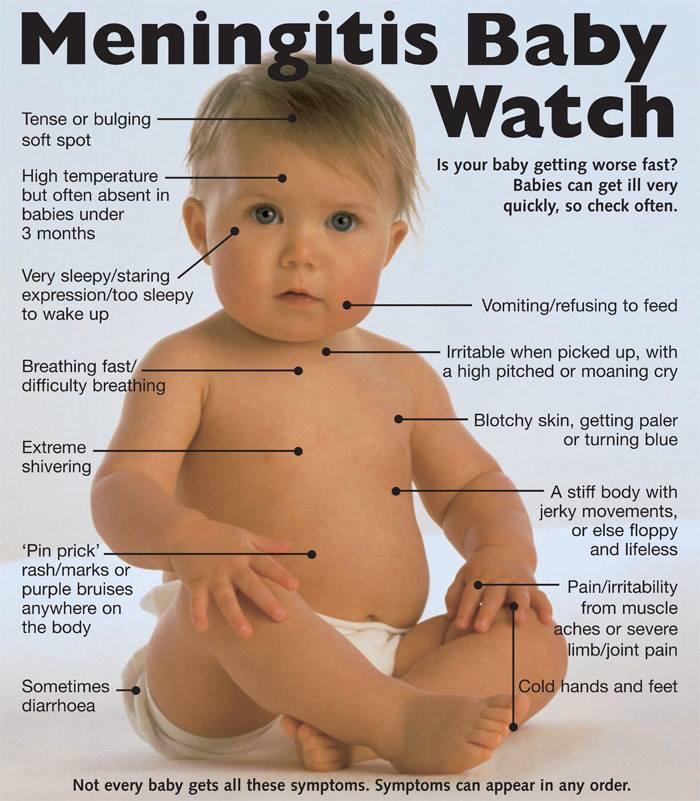 In most cases, with timely diagnosis and proper treatment, the child can fully recover. However, in severe cases, various complications and consequences may remain, so it is important to monitor the child’s condition and seek medical help in time if any suspicious symptoms occur.
In most cases, with timely diagnosis and proper treatment, the child can fully recover. However, in severe cases, various complications and consequences may remain, so it is important to monitor the child’s condition and seek medical help in time if any suspicious symptoms occur.
Meningitis: symptoms, causes and treatment
Content
- 1 Meningitis: symptoms, causes and treatment
- 1.1 Meningitis: symptoms, causes and treatment
- 1.1.1 What is meningitis?
- 1.2 Causes of meningitis
- 1.3 Symptoms of meningitis
- 1.4 Diagnosis of meningitis
- 1.5 Treatment of meningitis
- 1.5.1 Antibiotics
- 1.5.2 Antivirals
- 1.5.3 Anticonvulsants
- 1.5.4 Analgesics
- 1.5.5 Hospitalization
- 1.6 Antibiotics are a key element in the treatment of meningitis
- 1.7 Prevention of meningitis
- 1.7 .1 Vaccination
- 1.7.2 Avoiding contact with infected people
- 1.
 7.3 Maintaining personal hygiene
7.3 Maintaining personal hygiene
- 1.8 Complications of meningitis
- 1.9 Meningitis: how children deal with the disease
- 1.10 How to prevent meningitis
- 1.10.1 Vaccination
- 1.10.2 Hygiene measures
- 1.10.3 Strong immunity
- 1.10.4 Chronic disease control
- 1.11 Related videos:
- 1.12 Question -answer:
- 1.12.0.1 What is meningitis and how can it be determined?
- 1.12.0.2 What are the causes of meningitis?
- 1.12.0.3 How is meningitis treated?
- 1.12.0.4 Can meningitis be contagious?
- 1.12.0.5 How can meningitis be prevented?
- 1.12.0.6 What are the possible complications after cured meningitis?
- 1.1 Meningitis: symptoms, causes and treatment
Meningitis is a dangerous disease characterized by inflammation of the meninges. The article contains information about the symptoms, causes, diagnosis and treatment of meningitis.
Meningitis is an inflammation of the soft membranes of the brain and spinal cord that can have serious health consequences. The disease can result from various causes such as viruses, bacteria, fungi and other infectious agents. Symptoms of meningitis can come on suddenly and include headache, fever, nausea and vomiting, jaundice, and other signs.
With timely detection and proper treatment of meningitis, possible complications such as brain damage, organ dysfunction and even death can be prevented. Diagnosis of meningitis is carried out using a neurological examination, laboratory tests of blood and cerebrospinal fluid, computed tomography and other methods.
Treatment for meningitis may include antibiotics, antivirals, and other drugs, and a strict regimen and diet. In more severe cases, hospitalization of the patient and surgical intervention may be required.
Meningitis: symptoms, causes and treatment
What is meningitis?
Meningitis is an inflammation of the meninges that can be caused by various causes. Usually the disease is manifested by a sharp pain in the head and a feverish state. In addition, the patient may experience nausea, vomiting, difficulty breathing, and even become unconscious.
Usually the disease is manifested by a sharp pain in the head and a feverish state. In addition, the patient may experience nausea, vomiting, difficulty breathing, and even become unconscious.
Treatment of meningitis depends on its cause and severity. Sometimes symptomatic treatment is enough, but in more severe cases, antibiotics and hospitalization are necessary. Therefore, it is important to seek medical help at the first symptoms.
Causes of meningitis
Meningitis is an inflammatory process of the meninges, which can be caused by infectious and non-infectious causes.
Infectious causes of meningitis include viral, bacterial and fungal infections. Most often, meningitis is caused by viruses (about 80% of cases), less often by bacteria (about 15-20% of cases). Fungal meningitis is rare and usually occurs in people with compromised immune systems.
Non-infectious causes of meningitis include various inflammatory diseases (eg, rheumatoid arthritis) and allergic reactions to drugs or other substances.-Step-1-Version-3.jpg/aid525259-v4-728px-Treat-Meningitis-(Spinal-Meningitis)-Step-1-Version-3.jpg) Meningitis can also be the result of a head injury or surgery to the head and neck.
Meningitis can also be the result of a head injury or surgery to the head and neck.
The risk of meningitis is increased in people who have a weakened immune system (eg, those who are HIV-infected) or who live in unfavorable social and hygienic conditions.
In general, anyone can get meningitis, but the risk of it can be reduced by practicing good hygiene and preventing infectious diseases.
Symptoms of meningitis
Meningitis is a serious disease that can lead to death. Some of its symptoms may be harmless and easily mistaken for fatigue or a cold, but if a few signs are present, a doctor should be consulted.
Main symptoms of meningitis:
- headache that does not improve with pain medication;
- body temperature above 38 degrees;
- neck stiffness, inability to bend head to chest;
- photophobia, inability to look at light;
- less frequent symptoms – convulsions, impaired consciousness, vomiting.

Diagnosis of meningitis may require:
- spinal tap – extraction of cerebral fluid;
- complete blood count;
- computed tomography (CT) of the head or magnetic resonance imaging (MRI).
Diagnosis of meningitis
Meningitis is a complex disease, the diagnosis of which requires an integrated approach and certain knowledge of medical practice. The main symptoms of meningitis are headache, vomiting, high body temperature, convulsions, impaired consciousness.
To diagnose meningitis, it is necessary to conduct a series of examinations, including clinical, laboratory and instrumental methods. An obligatory step is the collection of anamnesis and examination of the patient.
Seeing a doctor early and conducting a comprehensive diagnosis helps to avoid complications and choose the best treatment for meningitis.
Treatment of meningitis
Antibiotics
Antibiotics are the main treatment for bacterial meningitis. They help kill bacteria and prevent possible complications. Your doctor may prescribe several types of antibiotics to make sure they are effective against a particular meningitis pathogen.
They help kill bacteria and prevent possible complications. Your doctor may prescribe several types of antibiotics to make sure they are effective against a particular meningitis pathogen.
Antivirals
Antivirals may be used for viral meningitis. They help reduce inflammation and fight the virus. Antivirals must be taken as soon as symptoms appear to be most effective.
Anticonvulsants
Meningitis may cause seizures and convulsions. To prevent these phenomena, anticonvulsants may be used. The doctor may prescribe medication or give advice on how to proceed if seizures occur.
Analgesics
Analgesics help relieve pain and headaches that occur during meningitis. Your doctor may recommend pain medication to relieve pain and discomfort.
Hospitalization
In case of severe meningitis, the patient may be hospitalized. At the hospital, he will be provided with appropriate medicines and medical care. If necessary, the patient can be treated in intensive care.
Antibiotics are a key element in the treatment of meningitis
Meningitis is a serious disease that causes inflammation of the meninges. One of the main ways to combat it is the use of antibiotics. They are prescribed in a hospital or clinic and are often prescribed for any suspicion of meningitis.
What antibiotics are used to treat meningitis?
- Penicillins. These are the most common type of antibiotics that kill the bacteria that cause meningitis. However, allergic reactions to penicillin can occur, so it is prescribed only if there is no risk in the patient.
- Cephalosporins. The choice of antibiotics from this class is due to their ability to penetrate the meninges faster. In addition, they do not cause severe allergic reactions.
- Macrolides. These antibiotics provide a wide spectrum of action against bacteria and inhibit their reproduction. They rarely cause side effects and are often used in combination with other antibacterial agents.

The specific type of antibiotic prescribed depends on the patient’s age, allergic history, disease type, and other factors determined by the physician.
Indications for antibiotic therapy Signs Recommended individual course of treatment
Unfortunately, antibiotics are not always effective, especially in forms of meningitis caused by viruses or fungal infections. Therefore, it is best to ensure the prevention of meningitis in order to minimize the risks of the disease.
Prevention of meningitis
Vaccination
Vaccination is one of the most effective methods of preventing meningitis. There are vaccines that protect against bacterial strains of meningitis, such as meningococci and pneumococci. It is recommended to vaccinate people who are at high risk of infection, such as children, teenagers and students, as well as people living in a community.
Avoid contact with infected people
Try to avoid contact with people suffering from infectious diseases, as this is how the bacteria that cause meningitis are transmitted. If you are in contact with a sick person, use a mask and help him maintain good hygiene.
Personal hygiene
The easiest and most effective way to prevent meningitis is to practice good personal hygiene: washing your hands often, using personal items such as towels and eating utensils, and avoiding sharing personal hygiene items with other people.
In general, prevention of meningitis can be achieved through social distancing and hygiene measures. Following these basic principles will help reduce the risk of contracting this disease.
Complications of meningitis
Meningitis is a serious disease that can lead to dangerous complications. In some cases, complications can develop quickly, in others – gradually and imperceptibly.
Other complications may be: hearing and vision impairment, malfunction of internal organs, epilepsy, mental retardation in children. Sepsis, a life-threatening condition in which the infection spreads throughout the body, can also occur with meningitis.
Sepsis, a life-threatening condition in which the infection spreads throughout the body, can also occur with meningitis.
- Purulent meningitis – a serious complication requiring surgical intervention
- Hearing and visual impairment – a possible complication of meningitis
- Sepsis – a life-threatening spread of infection
- Epilepsy – a possible consequence of meningitis
- Mental retardation in children – a possible complication
Meningitis: how children cope with the disease
Meningitis is a dangerous disease that can lead to serious complications and even death. Meningitis is especially dangerous for young children, because their immune system is not yet fully formed and cannot fight the infection.
The first symptoms of meningitis in children are often mild fever, nausea, vomiting and headaches. Subsequently, the symptoms may worsen, convulsions, high fever and disturbances in the work of the heart and respiratory system appear.
If children develop symptoms of meningitis, seek medical attention immediately. Diagnosis and treatment should be carried out under the supervision of specialists. In some cases, hospitalization may be required to prevent complications and provide necessary treatment.
In general, meningitis in childhood is difficult because the child has not yet fully developed an organism that can cope with the infection. Therefore, fundamental measures are the prevention of possible infection and timely access to a doctor in the event of the first signs of the disease.
How to prevent meningitis
Vaccination
Vaccination against meningitis is the most effective way to prevent the disease. There are different types of vaccines that can protect against different forms of meningitis. Vaccination is recommended for healthcare workers, students living in hostels, and travelers visiting areas where meningitis is endemic.
Hygiene measures
Hygiene is the second most important means of preventing meningitis. You should wash your hands regularly with soap and water, especially before eating or touching your face. Avoid shared items such as cutlery or glasses, especially if a family member or hostel has had meningitis. Avoid close contact with those with meningitis and isolate patients in separate rooms to better control the spread of infection.
You should wash your hands regularly with soap and water, especially before eating or touching your face. Avoid shared items such as cutlery or glasses, especially if a family member or hostel has had meningitis. Avoid close contact with those with meningitis and isolate patients in separate rooms to better control the spread of infection.
Strong immunity
Strong immunity will help the body fight infection. Keep your immune system healthy by eating healthy foods, drinking enough water, and try not to abuse alcohol and tobacco. Try to get enough sleep and exercise regularly.
Chronic disease control
Chronic illness or exotic travel can increase the chance of contracting meningitis. If you have chronic diseases, keep them under control, follow your doctor’s prescriptions and avoid stress as much as possible. If you are going to travel to places where meningitis is common, ask your doctor for advice or guidance. You may need specific vaccinations before you travel.
You may need specific vaccinations before you travel.
Examples of recommended meningitis vaccines Vaccine Type of meningitis against which
protects
| Meningococcal conjugative | Meningococcal meningitis |
| Antipneumococcal | Pneumococcal meningitis |


:max_bytes(150000):strip_icc()/menigitis_symptoms-5b0d5dbd0e23d90036bd6770.jpg)
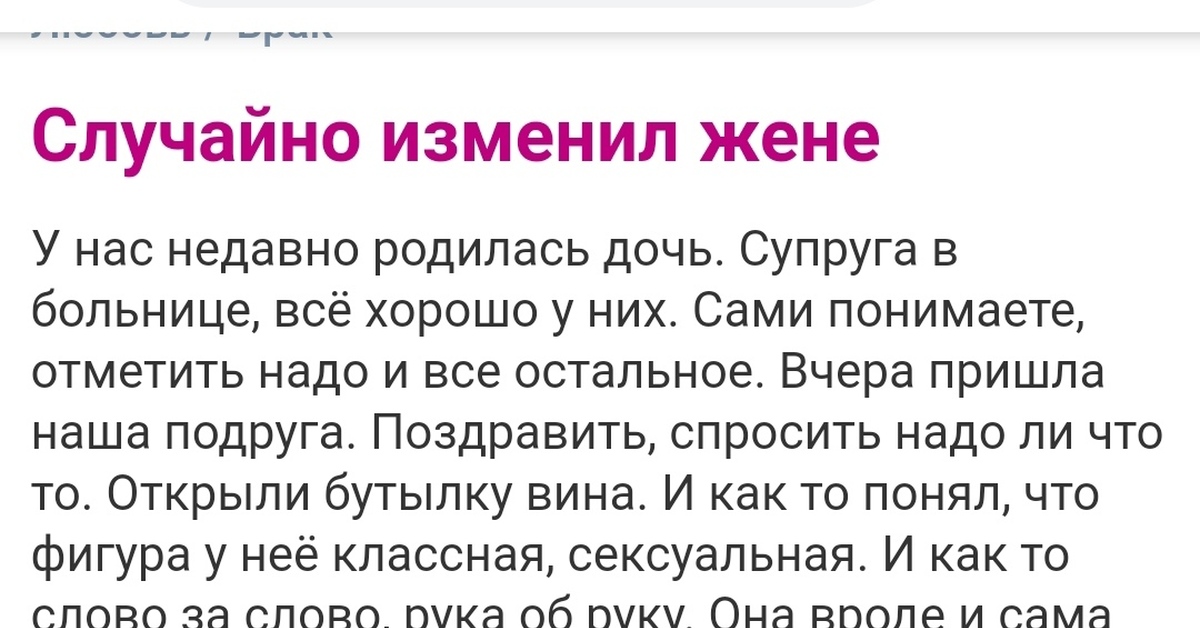
 It’s often caused by eating or drinking something that’s been contaminated by an infectious parasite that normally only infects animals.
It’s often caused by eating or drinking something that’s been contaminated by an infectious parasite that normally only infects animals. This type can be fatal if it’s not treated immediately with antibiotics to prevent the spread of the infection and further complications.
This type can be fatal if it’s not treated immediately with antibiotics to prevent the spread of the infection and further complications. Bacteria can also get into your meninges and infect them directly. Bacteria can be spread through infected blood.
Bacteria can also get into your meninges and infect them directly. Bacteria can be spread through infected blood. 10 How can I protect my child from meningitis?
10 How can I protect my child from meningitis? 7.3 Maintaining personal hygiene
7.3 Maintaining personal hygiene

